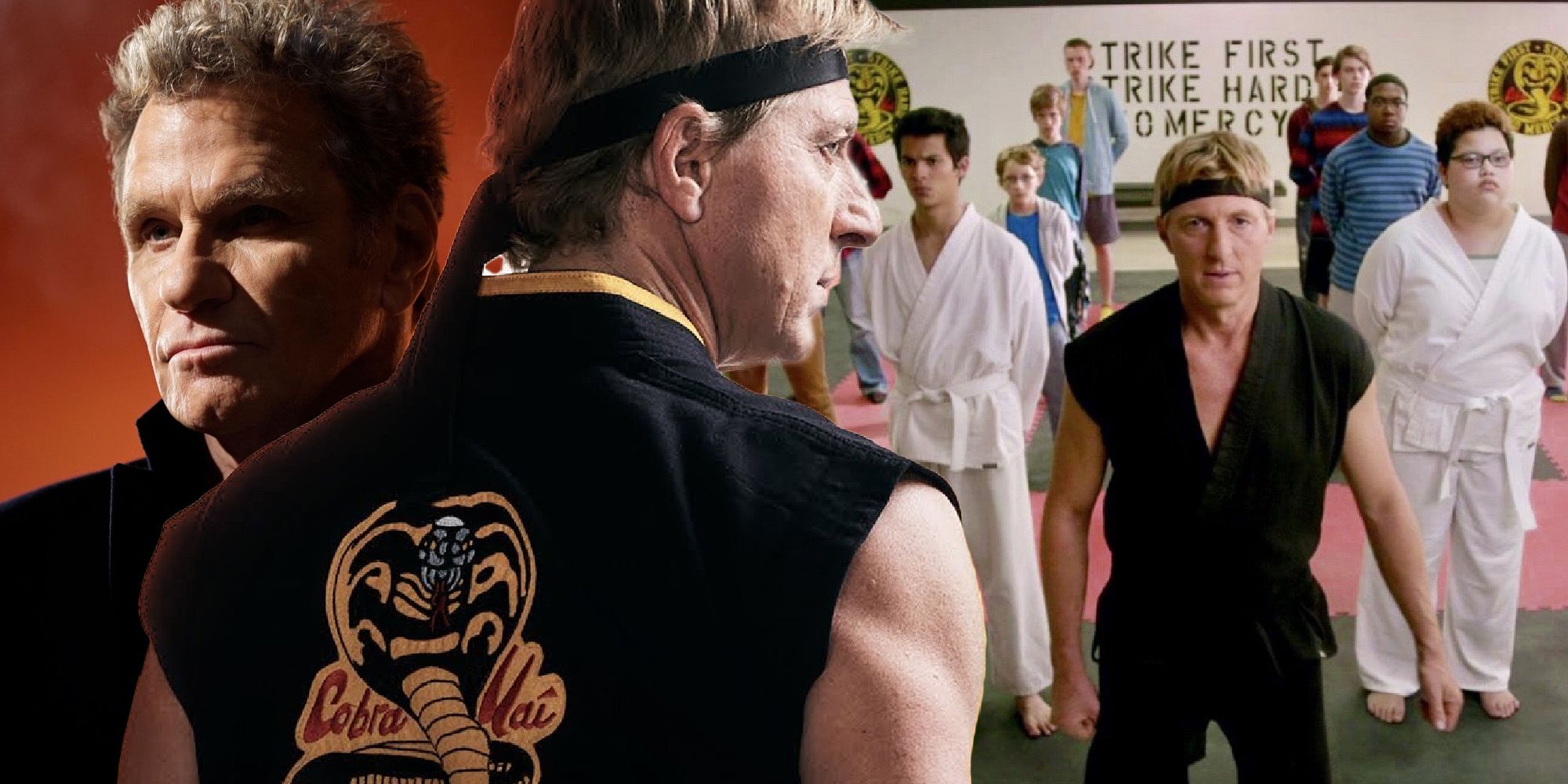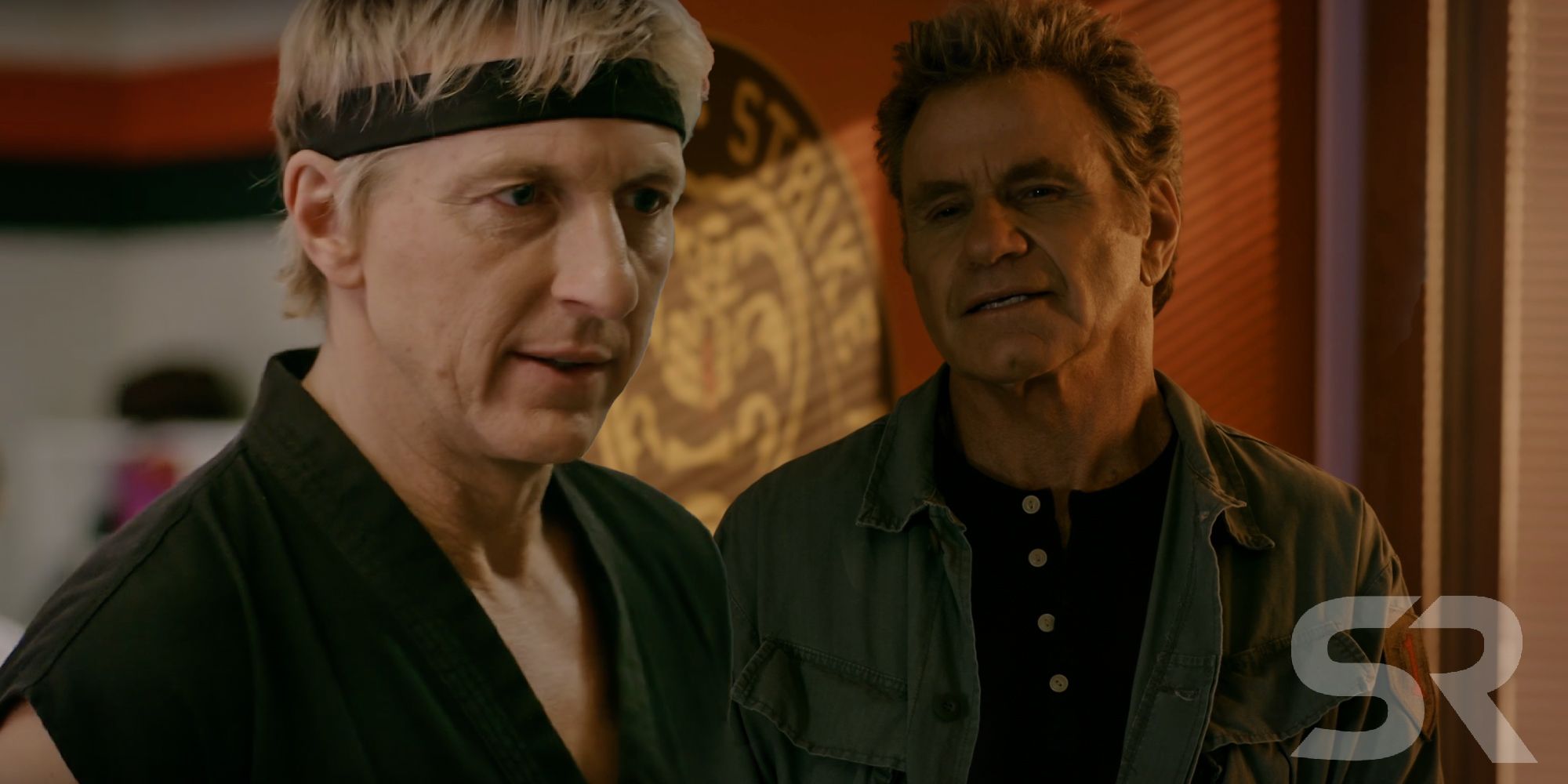In Cobra Kai, what does the name of the focal dojo actually mean? The fictional karate school was first introduced in the 1984 franchise-starter, The Karate Kid, and fuels much of the narrative conflict throughout the Netflix series. The Cobra Kai dojo adheres to a "no mercy" mentality and fights in all black, leaving casual watchers to wonder about the specifics of the dojo's name.
Cobra Kai stars William Zabka and Ralph Macchio as Johnny Lawrence and Daniel LaRusso, respectively. Decades after facing off in the 1984 All-Valley Karate Tournament, the two characters still squabble about their battle — the climactic event of The Karate Kid. Daniel won the match based on knowledge gleaned from his Miyagi-Do sensei, Mr. Miyagi (Pat Morita). As for Johnny, the victim of an illegal crane kick, he was forced to explain himself to sensei John Kreese (Martin Kove), the founder of Cobra Kai.
The Karate Kid II picks up immediately after the events of the original film, and shows Mr. Miyagi defending Johnny's honor by shaming Kreese in public. In Cobra Kai, a down-and-out Johnny re-establishes Cobra Kai and reluctantly allows Kreese to co-train a new generation of students. The ill-advised decision results in a fascinating brawl sequence during the Cobra Kai season 2 finale, and sets up a final twist that establishes Kreese as the legal owner of the Cobra Kai dojo. The karate school includes a wall slogan that reads "Strike First, Strike Hard, Now Mercy," and its techniques are based on complex traditions, but the actual meaning of "Cobra Kai" is quite simple.
According to extensive 2020 report on Cobra Kai's karate inspirations (via Den of Geek), the name "Cobra Kai" literally translates to "Cobra Assembly" or "Cobra Meeting." In addition, the majority of the actual techniques used by the dojo weren't inspired by traditional karate but rather Tang Soo Do — a Korean style of martial arts. The Karate Kid was choreographed by Pat E. Johnson, whose Tang Soo Do influence extends all the way to the Netflix series. In a unique character twist, the character Kreese presumably learned Tang Soo Do while serving the U.S. military in Korea, and then brought his knowledge back to America after becoming the U.S. Army Karate Champion. However, Kreese didn't incorporate a clear Korean influence when naming his brand new dojo, as "Cobra Assembly" must've seemed more practical. Plus, in American culture, the cobra is symbolic of danger with its deadly venom and quick strikes. That's the John Kreese way.
The Cobra Kai dojo may have a generic and simple name (aside from the obvious snake correlation), but Miyago-Do is indeed rooted in deep martial arts traditions. Mr. Miyagi's style incorporates techniques from both the kata and Gōjū-ryū styles, both of which originated in the character's home city of Okinawa, Japan. In The Karate Kid, Daniel learns the basics of Miyagi-Do, and then immerses himself in Okinawa culture during his visit in The Karate Kid Part II. When Mr. Miyagi explains the origin story of the family dojo, he essentially tells the real-life story of Gōjū-ryū founder, Chōjun Miyagi. With Cobra Kai, the dojo culture is mostly based on the philosophies of John Kreese, a character who will presumably be the primary villain in Cobra Kai season 3.


